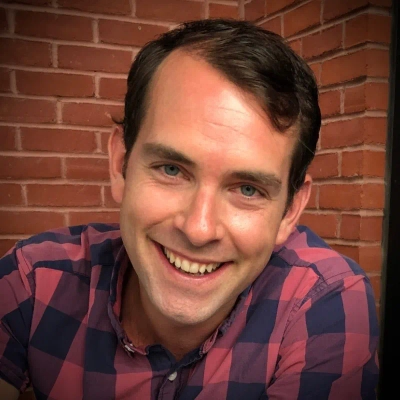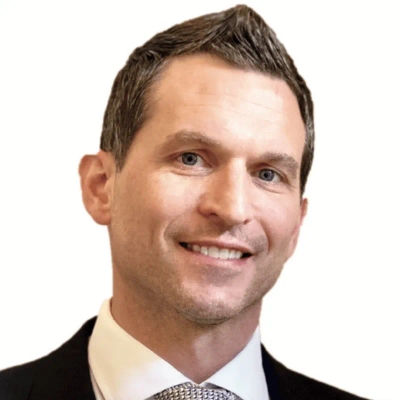How to Continuously Improve as a Management Consultant
Management consulting is a dynamic field that demands constant growth and adaptation. This comprehensive guide offers practical strategies for consultants looking to elevate their skills and effectiveness. Drawing from the insights of industry experts, it provides a roadmap for continuous improvement in areas ranging from client communication to problem-solving techniques.
- Lead with Your Big Idea
- Combine Facts with Compelling Stories
- Frame Findings in Business Context
- Prepare a Concise Decision Packet
- Guide Clients to Their Own Conclusions
- Start with Positive Acknowledgment
- Begin with Clear Recommendations
- Use Visual and Tangible Examples
- Create a Stress-Free Environment
- Encapsulate Story in One Slide
- Translate Findings into Client Priorities
- Focus on Client's Specific Goals
- Simplify Complex Information
- Show Tangible Results with Photos
- Present a Personalized Solution Story
- Lead with Diagnosis, Not Solutions
- Use the Three Rs Method
- Combine Clarity with Empathy
- Practice Transparency and Active Listening
- Demonstrate Value with Real Examples
- Offer a Clear, Step-by-Step Approach
- Tailor Communication to Client Needs
- Use Compassionate, Visual Explanations
- Provide Actionable, Jargon-Free Advice
- Translate Technical Info to Business Value
- Present a Simple Three-Step Roadmap
Lead with Your Big Idea
The most powerful tip I can share when presenting is to lead with your Big Idea in your own words. A clear, human, decision-shaping sentence that frames the entire conversation around impact. When you distill your Big Idea into 30 seconds, you've captured your client's attention and everything that follows becomes context, not clutter.
I've seen rooms shift the moment a crystallized sentence lands. The debate sharpens, the next step appears, and you gain more time to deepen critical relationships. Clients want to know what solves their problem, where the hidden value lies, and how to act fast. They don't need a 101-slide detour or lengthy preamble that sends them into a data coma.
You can hone your Big Idea through a tool I developed in my coaching practice called the "Shelley Grinder"—a series of short, focused sprints that apply the science of constraint. These timed bursts train your brain to distill complexity into clarity quickly, saving time, and revealing the essence of what it is you want your client to know. The process helps you cut through noise, organizes thinking, and when you repeat your idea strategically throughout your presentation, you can make it unforgettable.
The communication style that makes your message land? Speak like a human, not a policy brief. You want to be the bridge in the partnership, not the barrier. After sharing your Big Idea, pause. Let your client process what you've said before asking questions that invite dialogue. That's how you become an unscripted and admired speaker while guiding the room toward action.
This shift transforms an hour-long ramble into a 30-second articulated vision that moves both the conversation and the business forward. When your Big Idea is fully crystallized, you don't have to hope your message lands—you know it will.
Be the remarkable speaker you want to hear, one who embodies their message and articulates a compelling vision.

Combine Facts with Compelling Stories
When presenting findings and recommendations to clients, here's one of the most powerful tips I can give you:
Never tell a story without a point, and never make a point without a story!
Too many leaders I work with think that the facts will speak for themselves. This is not true. If facts alone changed behavior, no one would smoke, everyone would exercise daily, and every budget proposal would sail through untouched.
The reality is this: communicating with human beings isn't logical—it's biological.
Our brains are wired for stories - it's how everything important came to us throughout the vast majority of our deep history as a species. Neuroscience shows that when you share data wrapped in a story, your audience's brain lights up in more areas (I can explain this a little further if you'd like - just the Wernicke's area lighting up versus all the regions of the brain that well-crafted stories light up). This means they remember it, feel it, and are far more likely to act on it.
So when you present, don't just lay out the numbers and the recommendations. Frame them inside a story:
* Show (don't just tell) the challenge your client is facing.
* Share the human interest and what's at stake behind the data.
* Then guide them to the clear and compelling outcome that your recommendation creates.
This is why the TED format is so powerful—and why I train leaders at NASA, Johnson & Johnson, and beyond to master it. Story is what gets people to listen, believe, and move.
The most impactful communication style I've seen combines three elements:
1. Credibility - your data, analysis, and expertise.
2. Relatability - stories, metaphors, and human context - this establishes your Emotional Credibility™.
3. A Clear Call to Action - very clear next steps that make it easy for your audience to say "yes."
As they say: Facts tell. Stories sell. Recommendations stick when they connect both head and heart.
Frame Findings in Business Context
At Spencer James Group, we don't only fill roles for clients. We act as talent consultants, advising clients on workforce strategy. I've found that the way I communicate these insights is just as important as the insights themselves.
My top tip: always frame findings in the context of the client's business goals, not just the data. I connect the dots between compensation ranges, candidate availability, competitor hiring trends, and the client's long-term objectives. For example, if the data shows that top benefits professionals are favoring hybrid work, I don't just report that fact. I explain how it could affect retention and hiring timelines and recommend adjustments to keep the client competitive.
The communication style that works best for me is candid yet consultative. Clients value honesty delivered in clear, jargon-free language, backed by data but focused on solutions. By being direct while also acting as a partner, I build trust and position myself as someone helping solve business problems, not just sending resumes.

Prepare a Concise Decision Packet
I make it a point to prepare what I call a 'decision packet' for each client--a one-page summary that breaks down the key numbers, timeline, and next steps in bite-sized pieces they can review at their own pace. During our meeting, I focus on addressing their biggest concerns first, then walk through how my recommendations solve those specific problems, using examples from similar properties I've worked with in their exact neighborhood. This organized yet personal approach helps clients feel informed without being overwhelmed, and they often tell me they appreciate having something concrete to reference later.

Guide Clients to Their Own Conclusions
One of the biggest lessons I've learned in presenting findings is this: don't aim to convince the client—aim to let them discover it themselves. It sounds counterintuitive, but if you walk in with a polished deck and a 20-minute monologue, people nod politely and forget half of it by the time they grab lunch. The human brain isn't wired to remember polished arguments; it remembers "aha" moments.
So my communication style is more like guided storytelling. I set up the tension: "Here's the puzzle we faced." Then I walk them through the data or examples in a way that makes them connect the dots before I even reveal my recommendation. When they reach the same conclusion on their own, it feels less like me handing down an answer and more like a shared insight we uncovered together. That shift in ownership makes recommendations way more likely to be acted upon.
I also avoid sterile language. Clients don't want "statistical significance at the 95% confidence interval." They want, "Here's the pattern that kept showing up, and here's why it matters for your bottom line." Stripped-down, concrete, and a little conversational—that's what sticks.
In short: the most impactful communication style isn't about dazzling with information. It's about staging the conversation so the client feels like the smartest person in the room by the time they reach the recommendation with you.

Start with Positive Acknowledgment
I always start by acknowledging what's working in their current situation before diving into changes--it shows respect for their position and builds immediate trust. Then I use the 'show, don't tell' approach: I'll pull up comparable sales on my tablet right there with them, pointing to specific houses in their neighborhood that sold for different amounts based on condition or timing. This visual, data-driven method combined with genuine acknowledgment of their circumstances helps clients see the path forward without feeling like I'm pushing an agenda.

Begin with Clear Recommendations
One effective tip is to lead with the conclusion rather than building up to it. Clients value clarity, and starting with the key recommendation provides immediate focus. I have found that a structured, conversational style works best—explaining insights in plain language while keeping supporting data available for those who want depth. For example, when presenting a market entry analysis, I began with a clear statement of the recommended path and then broke down the top three data points that supported it. This approach avoided overwhelming the client with excessive detail while still establishing credibility. The impact was greater engagement, since clients could quickly grasp the direction and then ask targeted questions, which made the session collaborative rather than one-sided.

Use Visual and Tangible Examples
My best tip is to keep things visual and tangible. If I'm explaining a recommendation for a quick update before listing a house, I'll show a snapshot of another home where a similar fix delivered a great result, often right on my phone at the kitchen counter. Clients appreciate when you make it easy to visualize changes and relate recommendations to real numbers or simple outcomes they care about. I always keep my tone friendly and let them know there are no dumb questions--it's about making every step clear and comfortable.

Create a Stress-Free Environment
I always start by creating what I call a 'stress-free zone.' I'll sit down with clients at their kitchen table or wherever they're most comfortable and begin with something like, "Let's figure this out together, no pressure." Then I present my findings using a simple timeline approach, showing them exactly what happens week by week if they choose our solution versus other options. This calm, step-by-step communication style helps people process information without feeling rushed, which is crucial when they're already dealing with difficult circumstances like foreclosure or divorce.

Encapsulate Story in One Slide
When presenting to clients, I always begin with one clean slide that encapsulates the entire story: here's the problem, here's what we learned, and here's what we recommend. It's concise, clear, and sets the tone. Everything else, including charts, data, and context, merely supports that one central idea. This approach helps cut through the noise and keeps everyone focused on what matters.
This style is effective because attention spans are short, and clients don't want to sift through 30 slides just to find the answer. By leading with the insight and treating data as backup rather than the headline, people are more likely to pay attention. It has made a significant difference in how decisions are made and how quickly we progress after the meeting concludes.

Translate Findings into Client Priorities
The most effective approach is to translate findings into a narrative that ties data directly to the client's priorities. Instead of overwhelming them with raw figures or technical details, I distill insights into a clear storyline that highlights the issue, explains its implications, and then moves to actionable recommendations. Visual aids such as comparative charts or simple infographics help reinforce the point without distracting from the core message.
In terms of communication style, clarity and restraint have proven most impactful. Clients respond well when the presentation avoids jargon and emphasizes outcomes in language they can relate to their own decision-making. Pausing to check for understanding and allowing space for questions builds trust, as it signals that the conversation is a collaboration rather than a lecture. The goal is not just to present findings but to make the client feel equipped and confident in acting on them.

Focus on Client's Specific Goals
I always start meetings with a simple question: "What's most important to you in this transaction?" This frames everything that follows. When presenting findings, I use what I call the 'before-and-after method' - showing clients exactly where they stand now versus where they'll be after my recommendation. Drawing from my football background, I keep it like a good huddle - clear, purposeful, and focused on the next play. Clients respond best when they feel we're on the same team working toward their specific goal.
Simplify Complex Information
I use a compassionate, conversational approach. I listen carefully to their concerns and make sure they feel heard. Sharing stories of other clients who have regained independence after surgery or injury helps illustrate what's possible and builds trust. It makes the recommendations feel achievable rather than abstract. Visual aids and simple summaries also make a big difference. A chart showing progress goals or practical tips for at-home care keeps clients engaged and confident in their plan. Combining empathy, clear explanations, and relatable examples ensures they understand and feel supported. At the heart of it, presenting findings is about empowering clients. By focusing on their personal goals and showing how our holistic rehab approach can improve both pain and overall wellness, clients feel motivated to take the next step toward recovery.

Show Tangible Results with Photos
I start by connecting with the reality of their home. Many people feel stressed by clutter: piles of mail on counters, overflowing closets, or chaotic spaces shared with kids and pets. I talk about their challenges in a way that shows I understand what it's like to live in that environment. Once they feel heard, it's easier for them to trust the solutions I'm about to suggest.
My communication style is approachable but confident. I encourage questions and input while giving clear steps for action. This way, clients get guidance without feeling overwhelmed, and they leave the conversation knowing exactly what to do next. I also rely on visuals: before-and-after photos, simple sketches, or short walkthroughs to help clients really see the impact. Describing a decluttered closet is one thing, but showing it makes the transformation tangible and motivating.

Present a Personalized Solution Story
One effective tip is to lead with the outcome rather than the process. Clients respond best when the first thing they hear is the impact of your recommendation in clear terms, such as cost savings, risk reduction, or efficiency gains. In property and facility services, this might sound like, "Implementing this maintenance schedule will reduce emergency repairs by 30 percent over the next year." Supporting details and data can follow once the value is established. The most impactful style is concise and conversational, avoiding jargon that forces clients to decode technical terms. Using straightforward visuals, like before-and-after comparisons or a simple cost breakdown, helps anchor the discussion. This approach keeps attention on the benefit rather than the complexity of the work behind it.

Lead with Diagnosis, Not Solutions
Since my entire business is remote, our communication has to be crystal-clear and systematic. I present our offer as a simple, three-step roadmap: 'First, we agree on the price; second, you'll sign the documents virtually; and third, the funds are wired at closing.' This process-driven approach removes all the guesswork and shows clients we have a reliable system to get them from problem to payday without any surprises.

Use the Three Rs Method
When presenting findings and recommendations to clients, I've found that translating technical information into business language with clear financial implications is most effective. I always frame security measures as strategic investments rather than just technical requirements, backing this approach with concrete examples of how similar solutions have protected other organizations. This communication style helps clients understand the business value of recommendations and see how they align with their overall company objectives and bottom line.

Combine Clarity with Empathy
I also make sure to keep explanations simple and clear. Treatments like Botox, dermal fillers, microneedling, or CoolSculpting can feel overwhelming, so I focus on what each procedure will do for the client, the results they can expect, and any recovery details. This way, clients can make informed decisions without being bogged down by medical jargon.
Sharing examples really helps too. Before and after photos or client success stories show the real impact of our treatments, whether it's a smoother complexion, lifted features, or improved self-confidence. Seeing these results makes it easier for clients to envision what's possible for them.
Finally, I make the conversation two-way. I encourage questions, check in about comfort levels, and make sure clients feel supported every step of the way. By combining warmth, honesty, and clinical expertise, I help clients feel confident and excited about their journey toward natural, beautiful results.

Practice Transparency and Active Listening
Real estate is already stressful, so I don't add to it with vague advice; my goal is to give clients a clear to-do list, not a fluff-filled presentation. I lay out the data, explain what it means for their bottom line, and provide exact next steps to get the deal done. This direct, task-oriented communication style cuts through the noise and helps people feel in control.

Demonstrate Value with Real Examples
Hi there,
My biggest tip is to meet clients at their level, as not everyone wants a deep dive into the data. I focus on making it feel simple and familiar, depending on what they understand.
I turn complex findings and numbers into clear, actionable takeaways that actually make sense to them. I like to keep the tone relaxed and collaborative, so clients feel comfortable asking questions and confident in the recommendations we make.
Offer a Clear, Step-by-Step Approach
For me, it's about getting on their roof, figuring out what's going on, and then showing them exactly what I found. The single most effective tip I can give is to use photos and video. People can't get up on their own roof, so you have to bring the roof to them.
My approach is to always have a camera with me. I get on the roof and take pictures of everything—the damage, the good spots, the gutters, the flashings, everything. I get video, too. Then, when I'm on the ground with the homeowner, I show them the pictures on my tablet. I'll say, "Okay, see this? This is where your leak is coming from. That's a cracked shingle right there. And over here, you can see the hail damage." It's a conversation. I'm not giving a sales pitch. I'm showing them the problem with proof.
The results are immediate. When a homeowner can see the actual issue with their own eyes, they stop feeling like a number on a proposal. They feel empowered because they understand exactly what needs to be fixed. It builds trust right away because it's not just my word. It's the truth, right there on the screen. It also makes them a lot more confident in the price because they can see what they're paying for.
My advice to anyone who deals with clients is to show, don't just tell. No amount of fancy language or talking points can beat a simple, honest conversation backed up by evidence. The most impactful communication style is simply being clear, being direct, and being honest. That's it.
Tailor Communication to Client Needs
I've found the most effective approach is to present findings as a personalized 'solution story' that ties directly to the client's specific situation. When I sit with homeowners facing foreclosure or inheritance challenges, I show them a simple flowchart comparing their current position, the traditional selling route, and our direct purchase option--with real numbers for each path. This visual roadmap, combined with genuine conversation, makes complex decisions digestible and helps clients feel informed rather than overwhelmed by their options.

Use Compassionate, Visual Explanations
One Critical Tip for Presenting Data Recovery Findings: Lead with Diagnosis, Not Solutions
As VP and CIO of DataNumen, a data recovery software company, I've learned that the most impactful communication style starts with thorough investigation rather than jumping to recommendations.
Instead of immediately recommending a solution to clients, I first invest time to hear and fully understand their specific case. This means asking detailed questions about when the data loss occurred, what systems were involved, and what actions were taken afterward.
The game-changing approach is using multiple diagnostic methods to carefully analyze each situation and identify the root cause of the data loss or corruption, just like a doctor diagnosing a patient. In the data recovery industry, rushing to a solution without proper diagnosis often leads to further data damage or incomplete recovery.
Only after I fully understand and analyze the data disaster case can I design the most appropriate recovery strategy and choose the optimal solution for that specific client. This diagnostic-first approach allows me to recover the maximum amount of data possible.
When presenting findings, I walk clients through this investigative process, explaining what I discovered and why the recommended solution is specifically tailored to their situation. This builds tremendous confidence because clients see the methodical expertise behind the recommendation, rather than receiving a generic solution.
This approach has proven most impactful because it demonstrates genuine expertise while ensuring clients understand they're receiving a customized solution based on thorough analysis, not a one-size-fits-all recommendation.

Provide Actionable, Jargon-Free Advice
I've found that using what I call the 'Three Rs' method works best when presenting findings to clients: Real numbers, Relatable examples, and Realistic timelines. For instance, instead of saying 'this will increase your property value,' I'll show them the exact dollar amount based on comparable sales in their neighborhood, then relate it to a similar situation we handled nearby. When communicating, I maintain a warm but direct approach that respects their time. Clients appreciate when I can translate complex real estate concepts into clear action steps that align with their specific circumstances.
Translate Technical Info to Business Value
The key to communicating effectively with parents is combining clarity with empathy. Advice that shows cause and effect, connects to daily life, and provides small, doable steps tends to stick. Parents are more likely to adopt new habits when they can see immediate results, whether it's in brushing routines, playtime, or learning through exploration. Showing the practical impact of small, everyday actions helps children develop healthy habits, independence, and curiosity. When guidance feels real and achievable, parents can support their child's growth without feeling overwhelmed.
Parents respond best when advice is practical and easy to apply. While studies give us general guidance on child development, real-life experience often tells a different story. For example, telling a parent that brushing teeth before bed improves dental health is helpful, but showing how it also builds routine and independence makes it stick. Parents can see the benefit immediately, instead of just hearing facts.

Present a Simple Three-Step Roadmap
I've found that transparency combined with active listening creates the most impactful client communications. When presenting findings, I make sure to openly acknowledge client concerns first, which shows I truly understand their perspective before sharing recommendations. This approach has helped me build stronger trust with clients, even turning potentially difficult situations into opportunities for deeper partnerships. It's amazing how simply listening and being transparent about progress can transform a client relationship.







